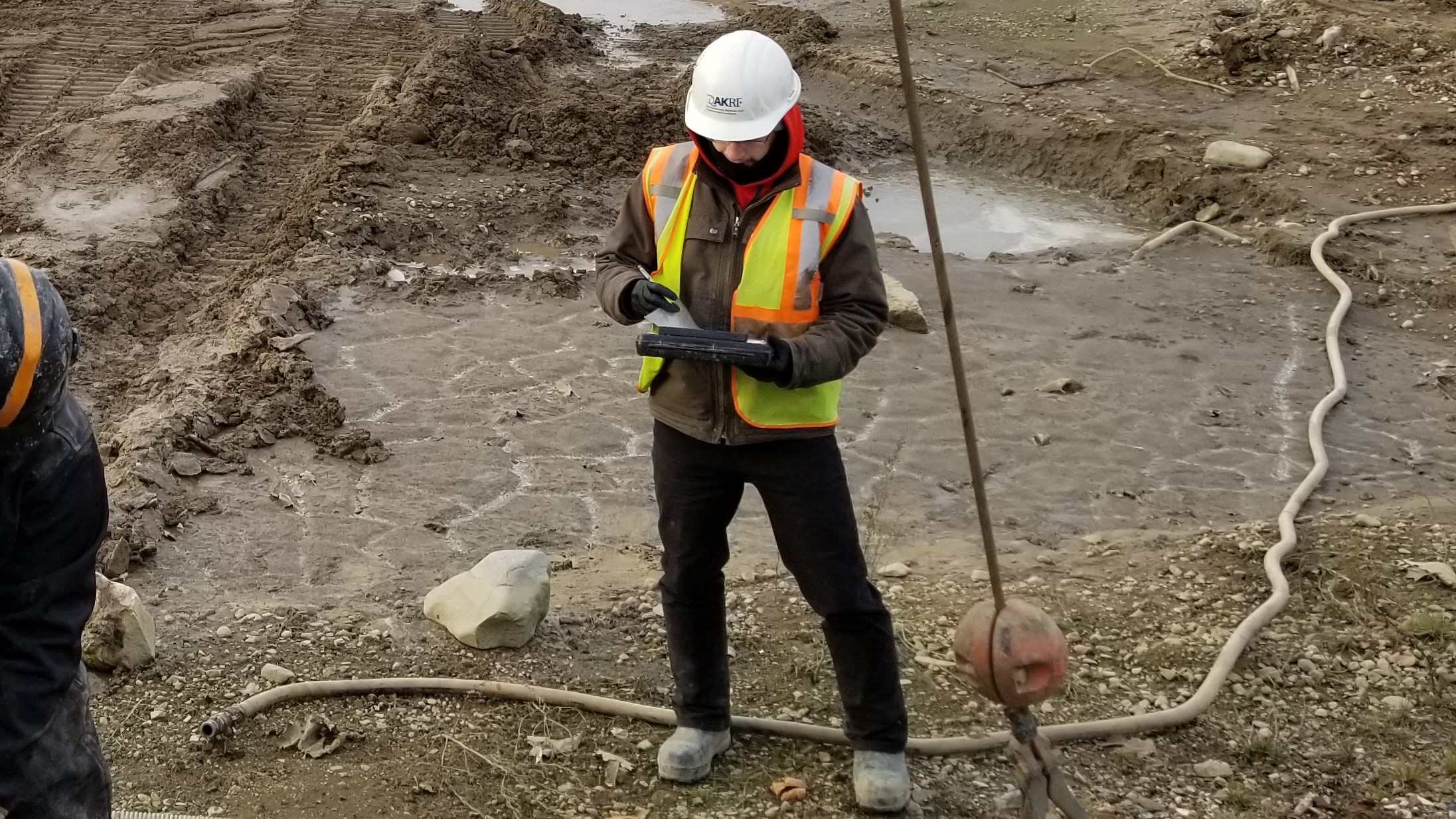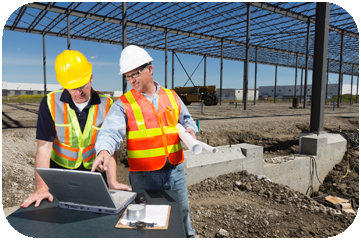Checking out the Benefits of Geo Tech Engineering for Urban Planning
Checking out the Benefits of Geo Tech Engineering for Urban Planning
Blog Article
The Important Payments of Geotechnical Designers in Assessing Dirt Behavior and Foundation Style for Sustainable Framework Growth
Geotechnical engineers offer as a keystone in the realm of lasting framework development, where their experience in analyzing soil actions straight affects the safety and long life of frameworks. By employing innovative strategies such as Conventional Penetration Tests and Cone Penetration Screening, they meticulously assess dirt residential properties, leading to notified decisions on foundation layout. These evaluations not only reduce risks related to differential negotiation however additionally lead the method for ingenious, ecologically mindful techniques. As we check out the vital duty they play, the ramifications of their contributions elevate vital questions about the future of infrastructure durability and sustainability.
Role of Geotechnical Designers

Along with site investigations, geotechnical designers examine possible threats such as soil liquefaction, slope security, and groundwater problems. They apply sophisticated engineering concepts to establish options that minimize these risks, ensuring that layouts abide by appropriate codes and standards. Their work commonly includes collaboration with other design disciplines, engineers, and ecological researchers to create integrated methods to facilities growth.
Furthermore, geotechnical engineers add to lasting techniques by advertising making use of materials and techniques that reduce ecological influence. Via their thorough understanding of dirt auto mechanics and geology, they play an essential role in promoting risk-free, resilient, and sustainable framework that meets the demands of culture while shielding the atmosphere.
Dirt Actions Evaluation Methods
Understanding soil actions is basic to educated decision-making in geotechnical engineering, as it straight influences the layout and building processes. Different assessment techniques are used to assess dirt residential properties, making sure precise predictions of its efficiency under different loading problems.
One main approach is the Typical Penetration Test (SPT), which provides understandings into dirt thickness and consistency via the resistance come across throughout infiltration. In A Similar Way, Cone Penetration Testing (CPT) supplies a continuous profile of dirt stratification and in-situ toughness specifications, making it possible for an extra thorough understanding of subsurface conditions.
Research laboratory examinations, such as Atterberg restrictions, unconfined compressive stamina, and triaxial examinations, are essential for identifying soil behavior under regulated conditions. These examinations promote the decision of essential criteria, including shear leaks in the structure, compressibility, and strength.

Foundation Design Concepts
Foundation style concepts are essential for making certain the security and durability of structures, as they dictate just how tons are transferred from the superstructure to the underlying dirt. These concepts include numerous factors to consider, including load-bearing capability, settlement, and side stability. A detailed understanding of soil technicians is vital for geotechnical designers to examine the interaction in between the foundation and the dirt.
One trick principle is the suitable selection of structure kind, which might include superficial foundations, such as spread grounds, or deep structures, like caissons or heaps, relying on dirt problems and architectural tons - geotechnical eng. The foundation needs to be made to lessen differential negotiation, which can bring about architectural damage

Sustainable Infrastructure Practices
Exactly how can we properly integrate sustainability into facilities methods? Sustainable infrastructure practices start with extensive site assessments, which review dirt habits, local communities, and source availability.
Additionally, utilizing ingenious building and construction strategies, such as making use of low-impact structures and recycled materials, substantially decreases the carbon footprint of infrastructure projects. Geotechnical engineers play a crucial function in choosing ideal products that boost durability and sustainability, such as utilizing geo-synthetics to improve dirt security and decrease disintegration.
On top of that, lasting framework practices require recurring monitoring and maintenance to ensure that frameworks continue to be resistant gradually. This includes applying flexible management methods to deal with possible environmental changes. Cooperation among stakeholders-- including designers, regional areas, and policymakers-- is crucial for incorporating sustainability goals into project planning and execution. Eventually, these methods not only contribute to the longevity of structures yet also advertise a much healthier atmosphere, straightening facilities development with broader sustainability objectives.
Study and Applications
Situation studies in geotechnical engineering give valuable insights right into the functional applications of soil behavior and sustainable framework practices. One remarkable example is the construction of the Burj Khalifa in Dubai, where considerable dirt testing and evaluation were carried out to evaluate the special challenges positioned by the region's imp source loose sand and high water table. Geotechnical designers used progressed techniques such as dynamic penetrating and cone infiltration testing to determine the dirt's load-bearing ability, ultimately resulting in the design of a deep foundation system that supports this legendary structure.
Another vital situation is the remediation of the San Francisco-Oakland Bay Bridge after the 1989 Loma Prieta quake. Geotechnical assessments revealed the demand for soil stabilization techniques, including grouting and soil nailing, to boost the seismic strength of the foundation. These treatments not just enhanced the bridge's safety however also added to its durability and sustainability.
Such case research studies exemplify just how geotechnical designers play a crucial duty in recognizing dirt actions and using innovative solutions to guarantee the architectural integrity and sustainability of infrastructure jobs. geotech engineer. Their proficiency is necessary in addressing the complex tests presented by numerous dirt conditions throughout varied geographic locations
Final Thought
In final thought, the payments of geotechnical designers are crucial for the evaluation of dirt habits and the design of foundations, which are necessary for lasting facilities development. Via the application of innovative testing strategies and ingenious materials, these experts ensure the security and safety and security of structures while decreasing ecological impacts. The combination of lasting methods promotes strength in facilities projects, highlighting the relevance of cooperation among stakeholders to accomplish efficient building and construction services that satisfy both social and ecological requirements.
Geotechnical designers offer as a foundation in the world of lasting infrastructure growth, where their knowledge in evaluating dirt behavior directly influences the safety and durability of frameworks.Geotechnical designers play a vital role in the design and building of framework by assessing soil and rock habits to More Help make sure security and safety. A complete understanding of soil technicians is important for geotechnical designers to examine the communication between the soil and the foundation.
Geotechnical assessments revealed the requirement for dirt stablizing techniques, including grouting and dirt nailing, to click for more enhance the seismic durability of the foundation.In verdict, the contributions of geotechnical engineers are crucial for the analysis of dirt habits and the design of structures, which are necessary for lasting facilities growth.
Report this page